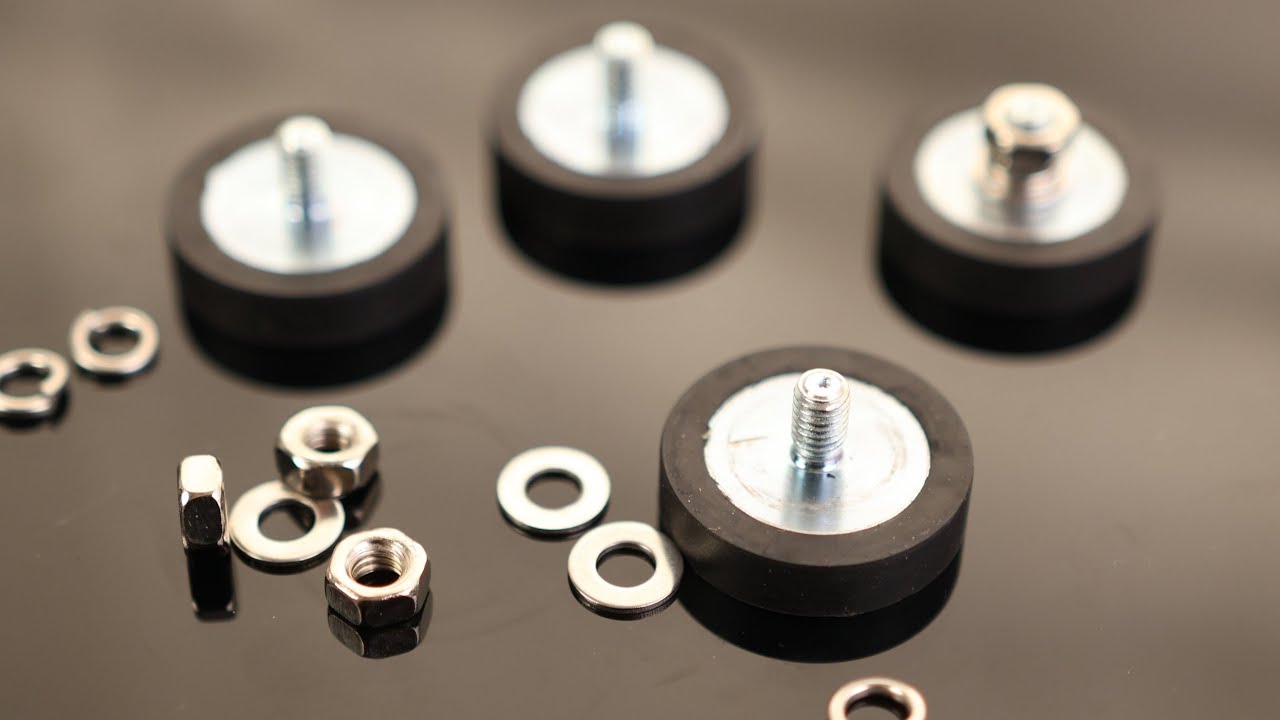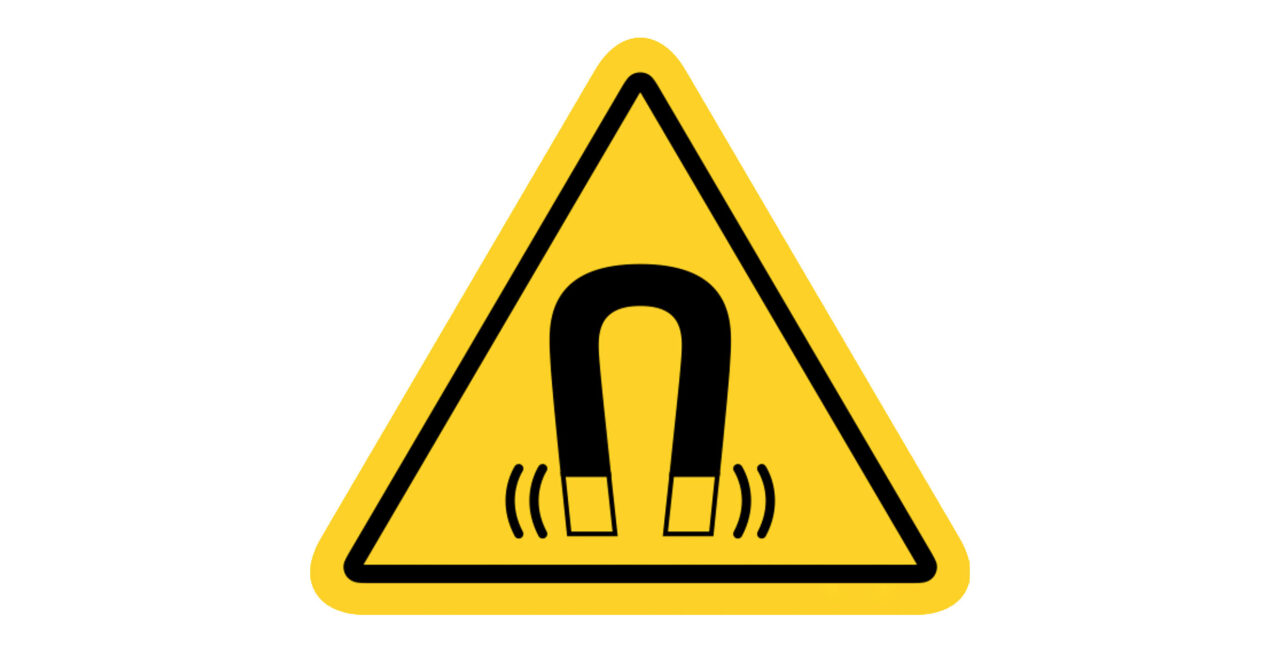What Are Rubber Coated Magnets?
Rubber coated magnets are powerful magnets (usually neodymium or ferrite) covered with a protective rubber layer. This coating shields both the magnet and any surface it touches from scratches, impacts, and corrosion.
Think of them as magnets wearing a protective jacket.
And that jacket does WAY more than just look good.
In fact, rubber coated magnets have become the go-to choice for thousands of industrial applications. From holding heavy machinery parts to organizing tools in workshops.
Why?
Simple: They combine serious magnetic strength with surface protection that regular magnets can’t match.
In this guide, I’ll show you exactly how rubber coated magnets work, their key benefits, and which applications they’re perfect for.
Let’s dive in.

How Rubber Coated Magnets Actually Work
Here’s the thing:
A rubber coated magnet isn’t just a regular magnet dipped in rubber.
It’s actually a sophisticated magnetic assembly with three main components:
- The magnetic core (usually neodymium or ferrite)
- A steel backing plate
- The rubber coating (typically 0.3 inches thick)
The steel plate creates what’s called a “magnetic circuit.”
This circuit focuses the magnetic field toward the working surface. Which means you get up to 5x stronger holding force compared to a plain magnet of the same size.
Pretty cool, right?
But here’s where it gets really interesting:
The rubber coating isn’t just slapped on there. Manufacturers use either vulcanization or injection molding to create a perfect bond between the rubber and the magnetic assembly.
This process ensures the coating won’t peel off. Even under heavy use.
The 7 Key Benefits of Rubber Coated Magnets
Let me break down why rubber coated magnets beat regular magnets in so many applications:
1. Surface Protection That Actually Works
Ever tried using a bare neodymium magnet on a painted surface?
Not pretty.
Regular magnets scratch, chip, and damage delicate surfaces. But rubber coated magnets? They’re like using a magnet with kid gloves.
The rubber layer acts as a cushion between the magnet and your surface. Perfect for:
- Vehicle mounting (no paint damage)
- Glass surfaces
- Polished metal
- Wood furniture
2. Insane Grip and Slip Resistance
Here’s something most people don’t realize:
The rubber coating dramatically increases friction between the magnet and the surface.
Translation? Your magnet stays put. Even on vertical surfaces.
In fact, testing shows that rubber coated magnets need up to 4x more force to slide compared to regular magnets.
3. Weatherproof and Corrosion Resistant
Regular neodymium magnets and moisture?
Bad combo.
They’ll rust faster than you can say “oxidation.”
But rubber coated magnets laugh in the face of weather. The coating creates a waterproof barrier that protects against:
- Rain and humidity
- Salt water
- Chemical exposure
- UV damage
Which is why they’re perfect for outdoor applications.
4. Impact and Shock Absorption
Drop a regular neodymium magnet and you’ll probably hear that stomach-dropping crack.
(Neodymium is notoriously brittle)
But rubber coated magnets? The coating absorbs impacts like a champ. Protecting that expensive magnetic material inside.
5. Noise Reduction
Nobody talks about this benefit:
Rubber coated magnets are QUIET.
When metal meets metal, you get that annoying clang. But the rubber dampens vibrations and eliminates noise.
Perfect for industrial settings where noise matters.
6. Enhanced Safety
Sharp magnet edges? Not with rubber coating.
The smooth rubber surface means:
- No cuts or scrapes
- Safer handling
- Reduced pinch risk
- Better grip when wet
7. Temperature Stability
Quality rubber coatings (like EPDM or silicone) maintain their properties from -40°C to 80°C.
That’s a huge operating range for most applications.
Types of Rubber Coated Magnets (And When to Use Each)
Not all rubber coated magnets are created equal.
Here are the main types you’ll encounter:
A-Series (Low Profile with External Thread)
- Best for: Tight spaces
- Holding force: 3.5kg to 42kg
- Common uses: Light fixtures, temporary mounting
B-Series (Extended Thread)
- Best for: When you need adjustability
- Holding force: 3.5kg to 42kg
- Common uses: Work lights, beacons, adjustable fixtures
C-Series (Internal Thread)
- Best for: Flush mounting applications
- Holding force: 2.5kg to 42kg
- Common uses: Hidden mounting, clean installations
The model numbers tell you the diameter. So a B43 has a 43mm diameter.
Simple.
Real-World Applications That’ll Blow Your Mind
Let me show you where rubber coated magnets really shine:
Cable Management That Actually Works
Tired of zip ties and adhesive clips?
Rubber coated magnets revolutionize cable management:
- Instant installation (no drilling)
- Easily repositionable
- Won’t damage cables
- Works on any steel surface
Just clamp your cables and stick the magnet where you need it. Done.
Industrial Work Light Mounting
Here’s a game-changer:
Mount LED work lights anywhere on steel beams, machinery, or vehicles. The rubber coating means:
- No surface damage
- Vibration dampening
- Secure hold even overhead
- Quick repositioning
Automotive Applications
Mechanics love these things:
- Holding parts during assembly
- Temporary signage on vehicles
- Tool organization
- Inspection mirror mounting
And zero paint damage. Ever.
Marine and Outdoor Equipment
Remember that corrosion resistance I mentioned?
Perfect for:
- Boat equipment mounting
- Outdoor displays
- Construction site organization
- Agricultural machinery
Manufacturing and Warehousing
In industrial settings, rubber coated magnets handle:
- Holding steel sheets during cutting
- Temporary fixturing
- Magnetic separation systems
- Safety sign mounting
The Manufacturing Process (Why Quality Matters)
Here’s something crucial:
Not all rubber coated magnets are made equal.
The manufacturing process determines everything from durability to holding force.
Quality manufacturers follow this process:
- Magnet preparation: Disc magnets are mounted on steel plates in alternating pole arrangements
- Mold placement: The assembly goes into a precision mold
- Rubber injection: High-grade rubber (TPV, EPDM, or silicone) is injected
- Curing: Heat and pressure create a permanent bond
- Quality testing: Each magnet is tested for adhesion and magnetic strength
Cheap manufacturers? They cut corners with inferior rubber like TPR that degrades quickly.
The difference is night and day.
How to Choose the Right Rubber Coated Magnet
Picking the perfect rubber coated magnet isn’t rocket science.
But you need to consider these factors:
1. Required Holding Force
First question: How much weight are you holding?
Always go with 3-4x safety factor. So for a 10kg load, use a magnet rated for at least 30-40kg.
Why? Real-world conditions (vibration, temperature, surface quality) reduce holding force.
2. Surface Type and Condition
Clean, flat steel? You’ll get maximum holding force.
But painted, rusty, or curved surfaces? Expect 50-70% of rated capacity.
Pro tip: Thicker paint = weaker hold.
3. Temperature Range
Standard rubber coatings work from -40°C to 80°C.
Need higher temps? Look for silicone-coated options (good to 200°C).
4. Chemical Exposure
Different rubbers resist different chemicals:
- EPDM: Great all-around resistance
- NBR: Excellent oil resistance
- Viton: Ultimate chemical resistance (but pricey)
5. Mounting Style
External thread? Internal thread? No thread?
Think about how you’ll attach whatever you’re mounting.
Installation Best Practices
Want maximum performance from your rubber coated magnets?
Follow these pro tips:
Surface Preparation Is Everything
- Clean thoroughly: Remove oil, dirt, and debris
- Check flatness: Gaps reduce holding force dramatically
- Remove thick paint: If possible, mount to bare metal
Proper Placement
- Center your load: Off-center loads create leverage that reduces holding force
- Use multiple magnets: Distribute weight for heavy loads
- Consider shear forces: Vertical mounting needs extra safety factor
Testing Is Non-Negotiable
Always test your setup with 2x the expected load before trusting it.
Seriously. Don’t skip this.
Maintenance and Longevity
Good news:
Rubber coated magnets need almost zero maintenance.
But these simple steps maximize lifespan:
- Regular inspection: Check for rubber damage or delamination
- Keep clean: Wipe down with mild soap and water
- Avoid overheating: Respect temperature ratings
- Store properly: Keep away from other magnets when not in use
With proper care, quality rubber coated magnets last 10+ years.
Even in harsh environments.
Common Mistakes to Avoid
I see these errors all the time:
Mistake #1: Ignoring Surface Gaps
Even tiny gaps crush holding force.
A 1mm gap can reduce holding force by 50%.
Always check surface flatness.
Mistake #2: Overloading
“It’s rated for 40kg, so 35kg is fine, right?”
Wrong.
That rating assumes perfect conditions. Real world? Use that safety factor.
Mistake #3: Wrong Rubber for the Job
Using standard rubber in chemical environments is asking for trouble.
Match the coating to your application.
Mistake #4: Mounting to Thin Steel
Thin steel can’t carry full magnetic flux.
Minimum thickness should be 3-4mm for optimal holding.
The Future of Rubber Coated Magnets
The technology keeps improving:
- Smart coatings that change color with temperature
- Nano-enhanced rubbers with 10x durability
- Integrated sensors for load monitoring
- Bio-based rubber alternatives
These innovations will expand applications even further.
Conclusion
So, what are rubber coated magnets?
They’re the perfect marriage of magnetic power and surface protection. Whether you’re mounting equipment, organizing tools, or solving industrial holding challenges, rubber coated magnets deliver performance that regular magnets simply can’t match.
The protective rubber coating transforms a simple magnet into a versatile tool that works in harsh environments, protects surfaces, and provides incredible holding power.
Now you know exactly what makes these magnetic assemblies special and how to use them effectively in your applications.



